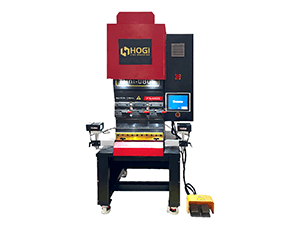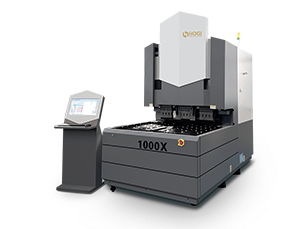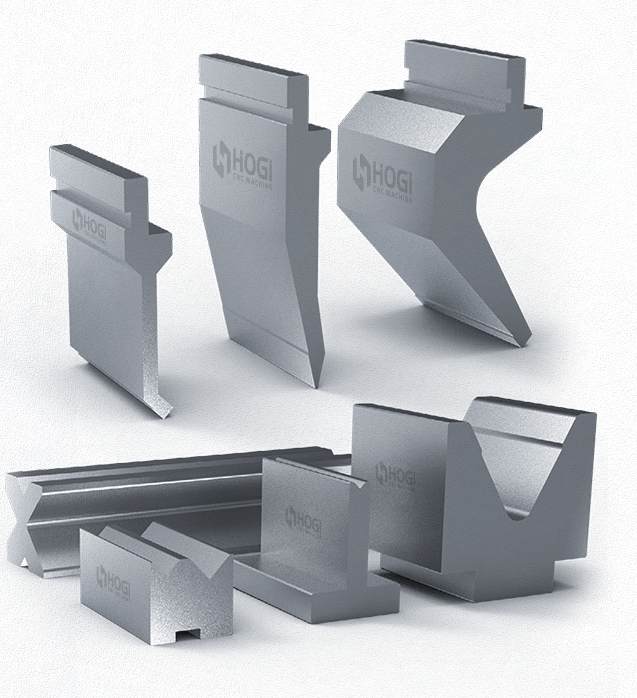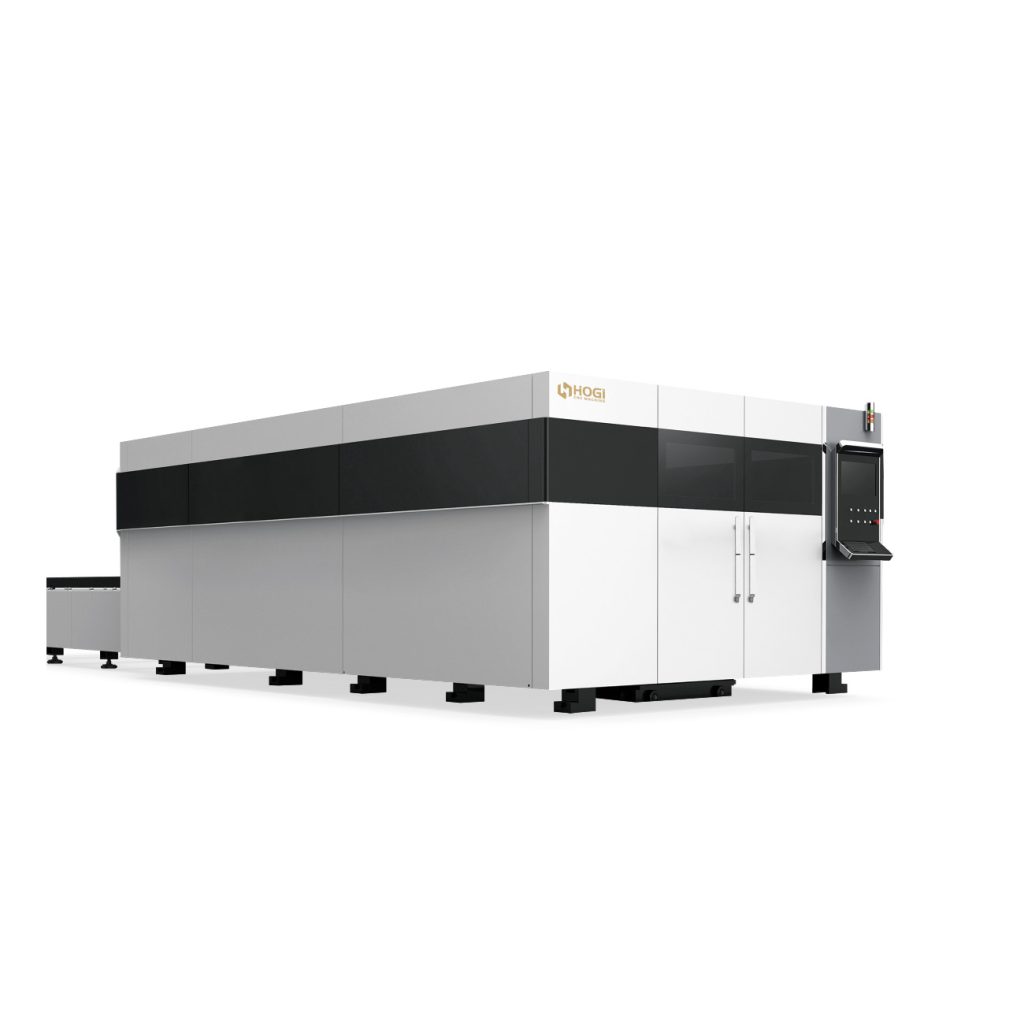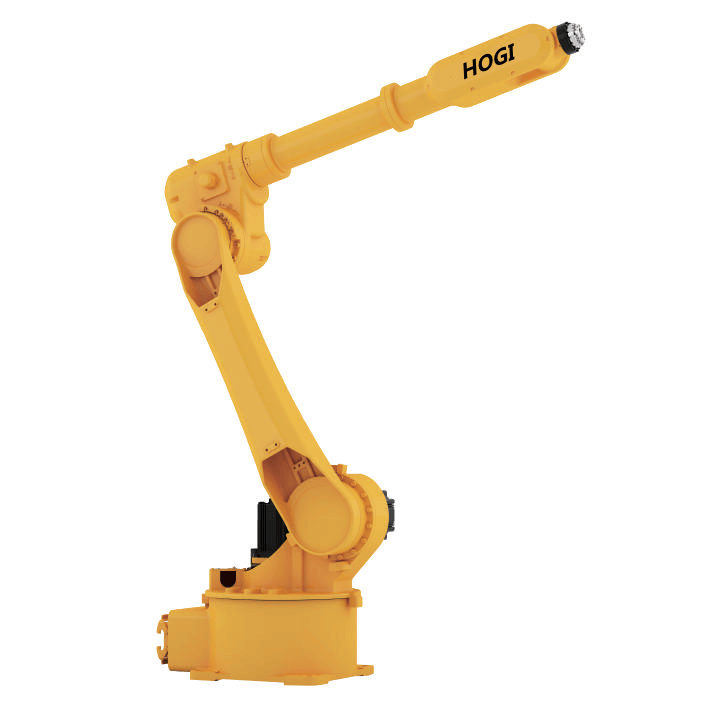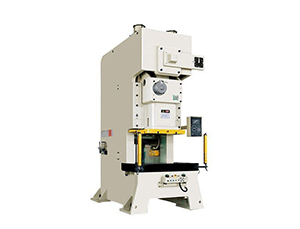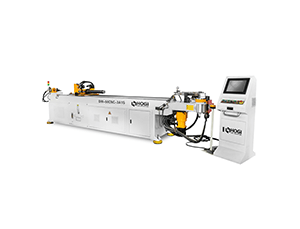
The robot is composed of the robot body and the control cabinet (hardware and software). The welding equipment, taking arc welding and spot welding as examples, consists of welding power source (including its control system), wire feeder (arc welding), welding gun (pliers) and other parts.
For smart robots, there should also be sensor systems, such as laser or camera sensors and their control devices. Welding robots produced in countries around the world are basically joint robots, and most of them have 6 axes. Among them, the 1, 2, and 3 axes can send the end tool to different spatial positions, while the 4, 5, and 6 axes solve the different requirements of the tool posture.
The mechanical structure of the welding robot body mainly has two forms: one is a parallelogram structure, and the other is a side-mounted (pendulum) structure.
The upper arm of the parallelogram robot is driven by a pull rod. The pull rod and the lower arm form two sides of a parallelogram.
The parallelogram robot developed early has a relatively small working space (limited to the front of the robot), and it is difficult to work upside down. However, a new type of parallelogram robot (parallel robot) developed since the late 1980s has been able to expand the working space to the top, back and bottom of the robot without the stiffness problem of the measuring robot, which has gained widespread attention.
This structure is not only suitable for light-duty robots but also for heavy-duty robots. In recent years, robots for spot welding (loads of 100 to 150 kg) mostly use parallelogram-shaped robots.
The main advantage of the side-mounted (pendulum) structure is that the upper and lower arms have a large range of motion, so that the working space of the robot can almost reach a sphere. Therefore, the robot can be hung upside down to work on the rack to save floor space and facilitate the movement of objects on the ground.
However, this side-mounted robot has a cantilever structure with 2 and 3 axes, which reduces the rigidity of the robot. It is generally suitable for robots with smaller loads for arc welding, cutting or spraying.
Each axis of the above-mentioned two kinds of robots is rotated, so it is driven by servo motor through cycloid pinwheel (RV) reducer (1~3 axis) and a harmonic reducer (1~6 axis). Before the mid-1980s, DC servo motors were used for electrically driven robots. Since the late 1980s, countries have switched to AC servo motors.
Because the AC motor has no carbon brushes and good dynamic characteristics, the new robot not only has a low accident rate, but also greatly increases the maintenance-free time and increases (decelerates) faster. Some new lightweight robots with a load of 16kg or less have a maximum tool center point (TCP) movement speed of more than 3m/s, accurate positioning and low vibration.
At the same time, the control cabinet of the robot also uses a 32-bit microcomputer and a new algorithm to make it have the function of self-optimizing the path, and the running trajectory is closer to the teaching trajectory.
Freedom selection of welding robot
The arm and wrist of the welding robot are the basic movement parts. Any design of the robot arm has three degrees of freedom to ensure that the end of the arm can reach any point within its working range. The three degrees of freedom of the wrist are the rotational motion of the three coordinate axes X, Y, and Z that are perpendicular to each other in space, which are usually called roll, pitch and yaw motions.
When customers purchase and use welding robots, the following aspects should be considered:
1. The production type of weldment belongs to the nature of multi-variety and small-batch production;
2. The structural dimensions of the weldment are mainly small and medium-sized welding workpieces, and the material and thickness of the weldment are conducive to the use of spot welding or gas shielded welding;
3. The blank to be welded can meet the technological requirements of welding robot welding in terms of dimensional accuracy and assembly accuracy;
4. Equipment used in conjunction with welding robots, such as automatic welding equipment and welding positioners, should be able to coordinate actions with welding robots on-line to keep the production rhythm in line;
Advantages of welding robot
With the development of electronic technology, computer technology, numerical control and robotics technology, since the automatic welding robot was used in production in the 1960s, its technology has become increasingly mature, and its advantages mainly include the following aspects:
1) Stabilize and improve the welding quality, which can reflect the welding quality in the form of numerical values;
2), improve labor productivity;
3) Improve the labor intensity of workers and work in harmful environments;
4), reduced the requirements for workers’ operating skills;
5) Shorten the preparation period for product modification and replacement, and reduce the corresponding equipment investment.


